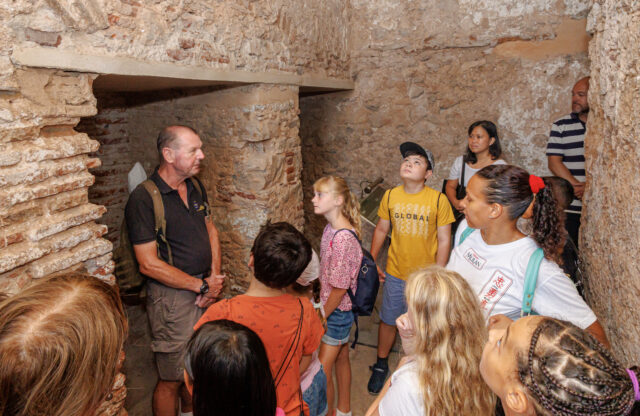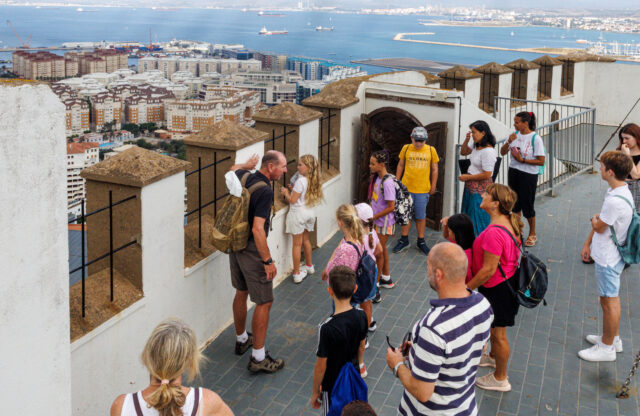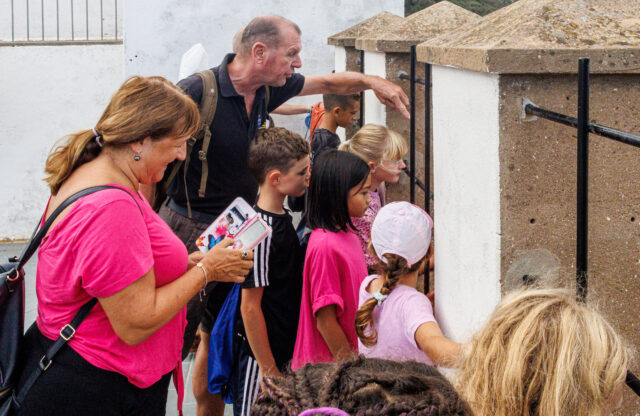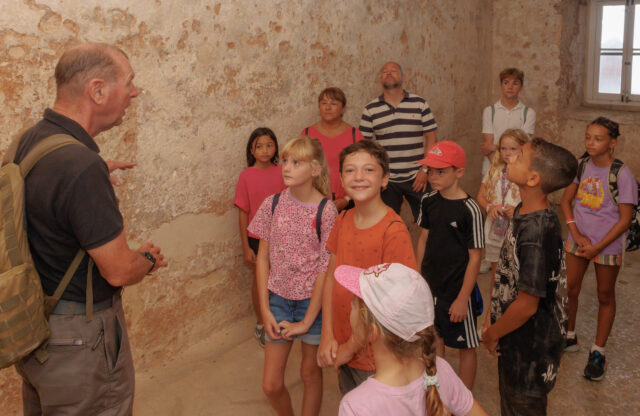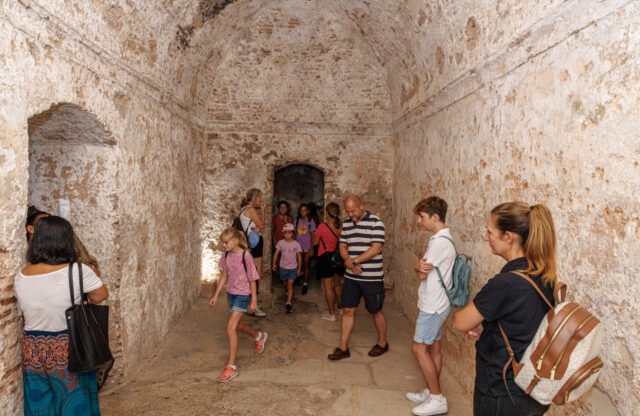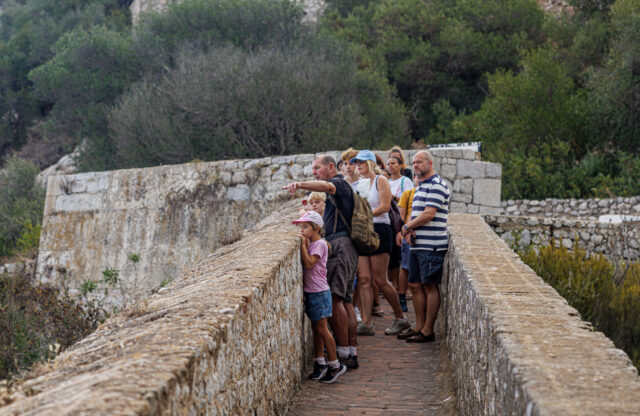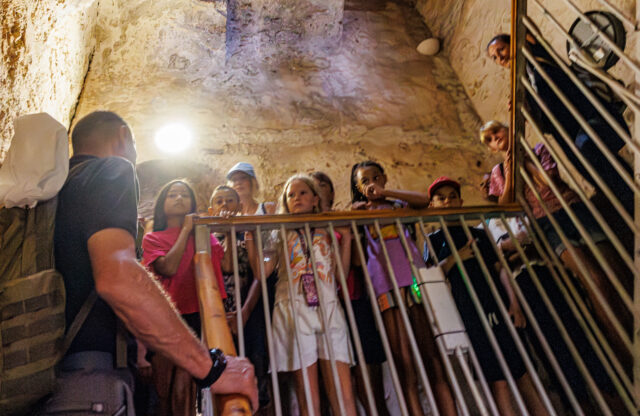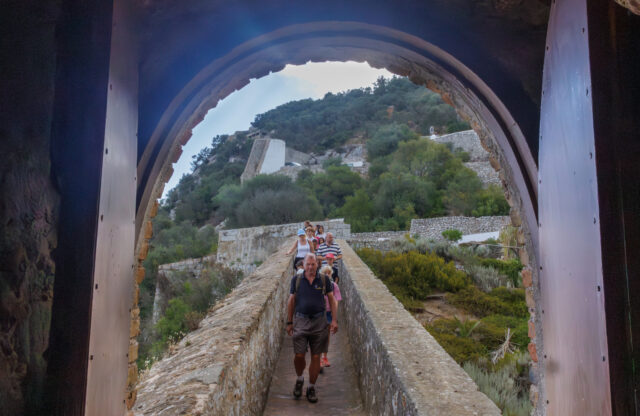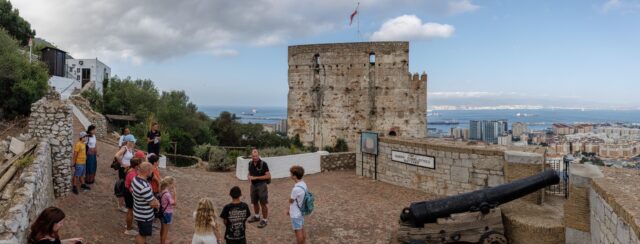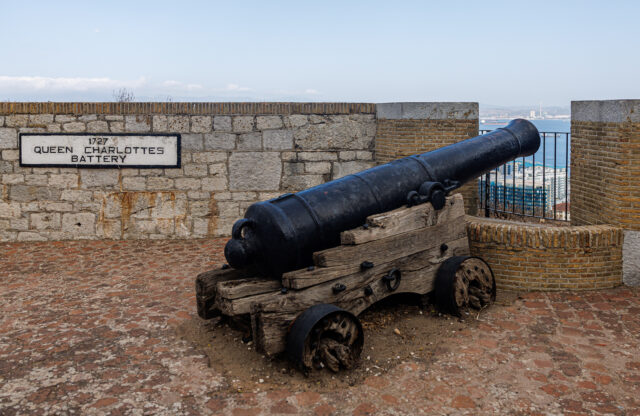Youngsters tour Moorish Castle in last summer ‘Walk Through History’
Photos by Johnny Bugeja
By Neve Clinton
Youngsters toured the Moorish Castle Complex gaining a deep insight into local history in the Gibraltar National Museum’s last ‘Walk Through History’ of the summer.
The tour, which began at the Tower of Homage, was led by Senior Guide Phil Smith.
Mr Smith highlighted part of the castle grounds, with its walls trailing all the way down to Casemates Square.
The children learned that the Moors, from the country we now call Morocco, conquered the Spanish region of Andalucia, which included Gibraltar, in 711 and controlled the majority of the Iberian Peninsula for over 700 years.
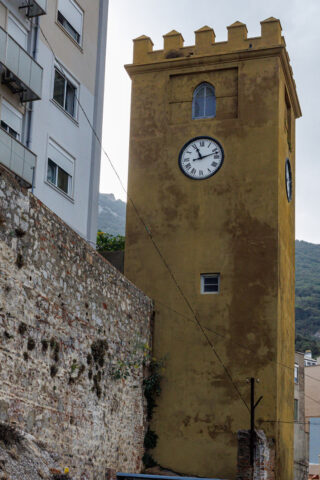
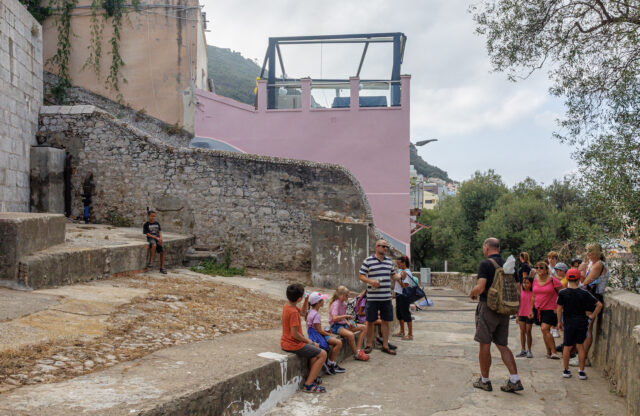
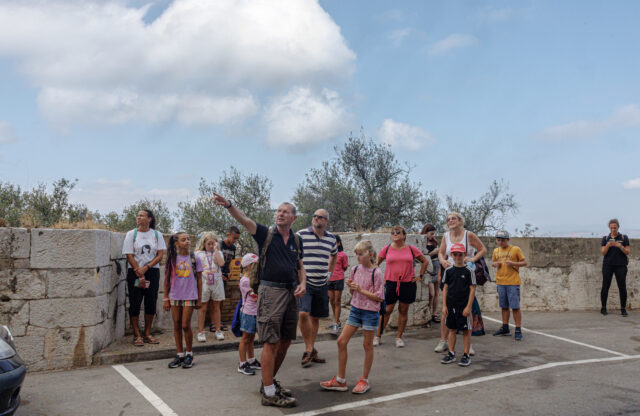
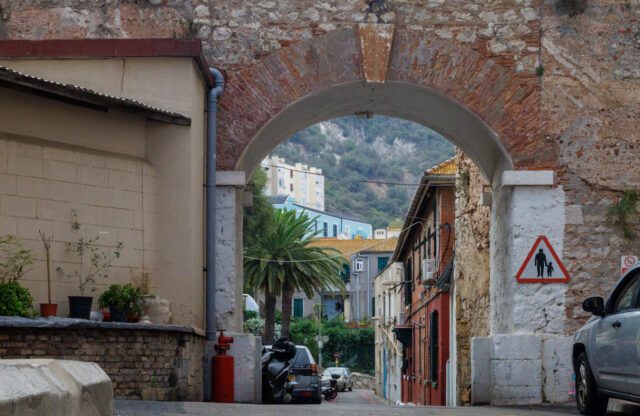
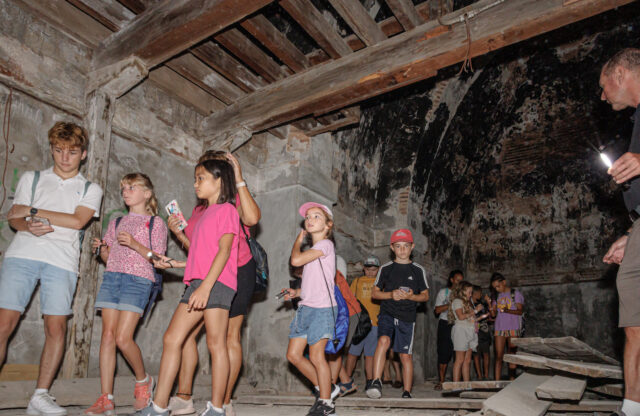
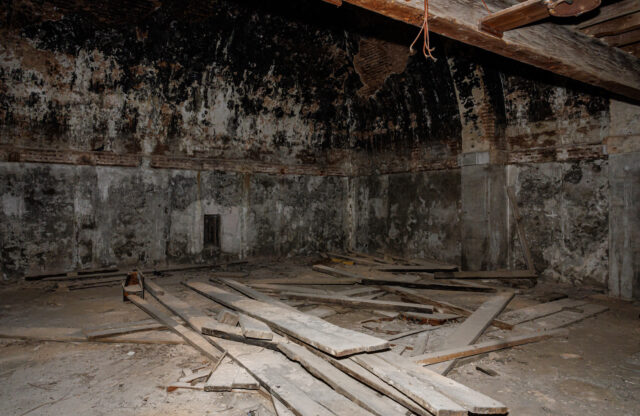
Mr Smith explained that Gibraltar got its name from the Arabic word ‘gebel’, meaning mountain, and the name of the general who led the troops to the rock, Tarik ibn Zayed; ‘Gebel Tarik’.
In 1333 the Moors set out to build Medinat al Fath; The City of Victory, with the castle as its epicentre, and built the city with walls so thick that when the Spanish took over in 1462, and later the British in 1727, they were unable to knock them down and instead had to build alongside and on top of them.
Mr Smith pointed out the British gun battery alongside the tower, as well as the dents in the castle walls formed by catapults and cannons, stating that the castle has been a “defensive position right through until the Second World War” and was “built so strongly that it survived 10 sieges”.
To demonstrate the thickness of the walls Mr Smith asked the attendants to line up along the depth of the entrance and totalled it 19 people thick.
The tour of the Tower of Homage proceeded with Mr Smith teaching the group that the reason for the staircase turning right was that it made it more difficult for the enemy to ascend and attack with their right hand, which he demonstrated interactively by asking some of the children to attempt it with a prop sword.
The group was shown where a well, a pantry, a cold food store, a kitchen, a bathroom and a small mosque, or a private chapel during Catholic Spanish times, would have been.
Mr Smith also taught them about how the castellations along the top protected the soldiers defending the tower, especially during Moorish times in which they used bows and arrows which needed to be reloaded before shooting each time.
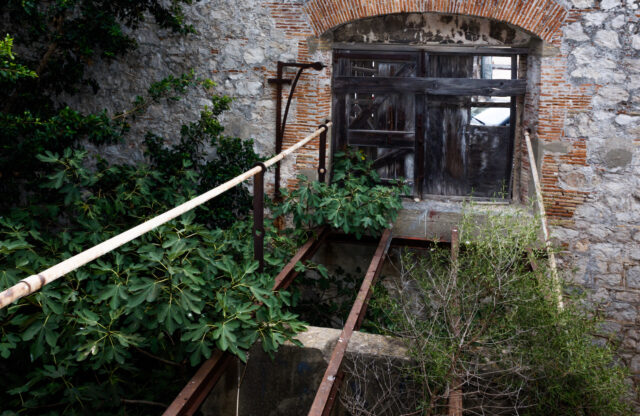
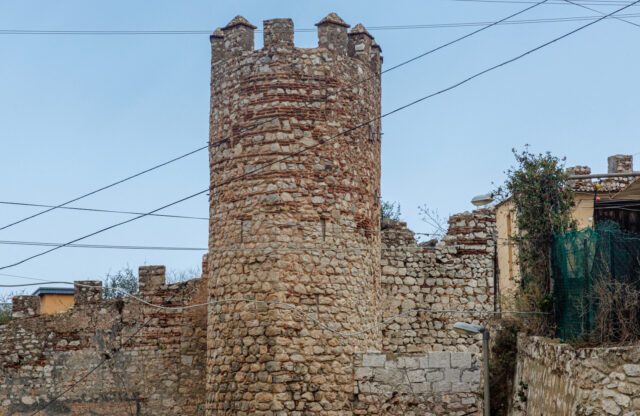
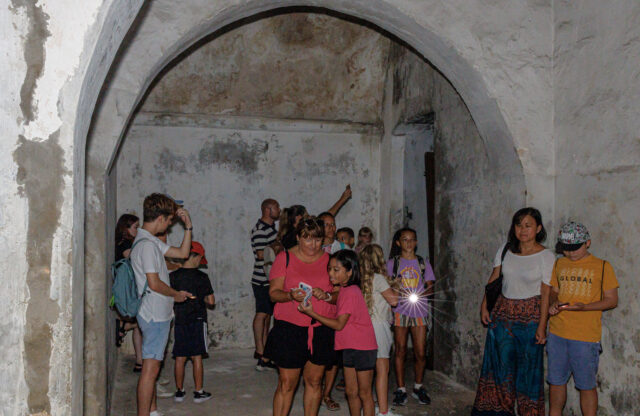
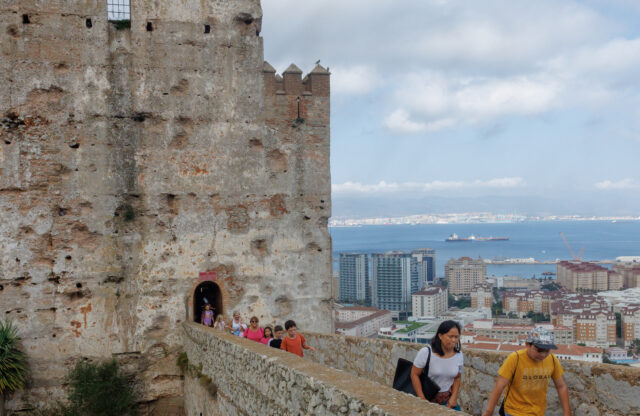
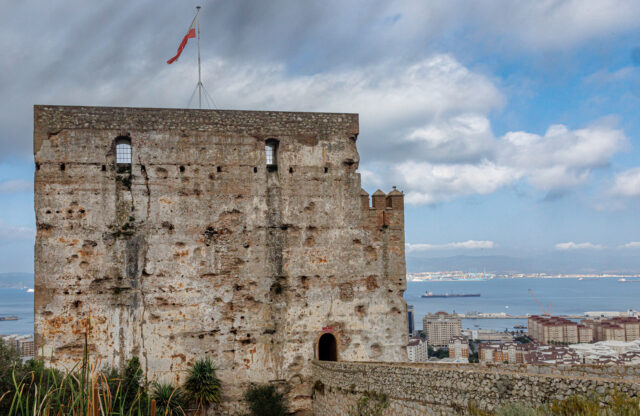
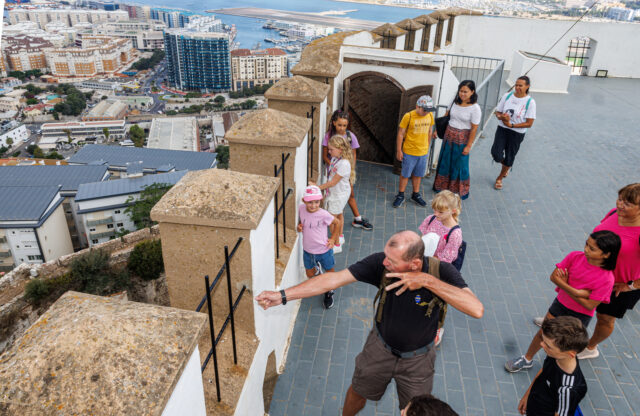
He then went on to explain that in front of the tower was the inner and outer keep, and beyond that, what is now Moorish Castle Estate, would have been a quiet open area.
The tour continued down along the city walls, including the outer wall of the kasbah which was then turned into a battery by the British, through Moorish Castle estate and down to the Gatehouse before reaching the end of the walk at Casemates Square.
The group also toured the Gatehouse, learning that it was specially designed to only let one horseman through at a time which made it easier to defend in the event of an attack, and was later used by the British to store ammunition.






